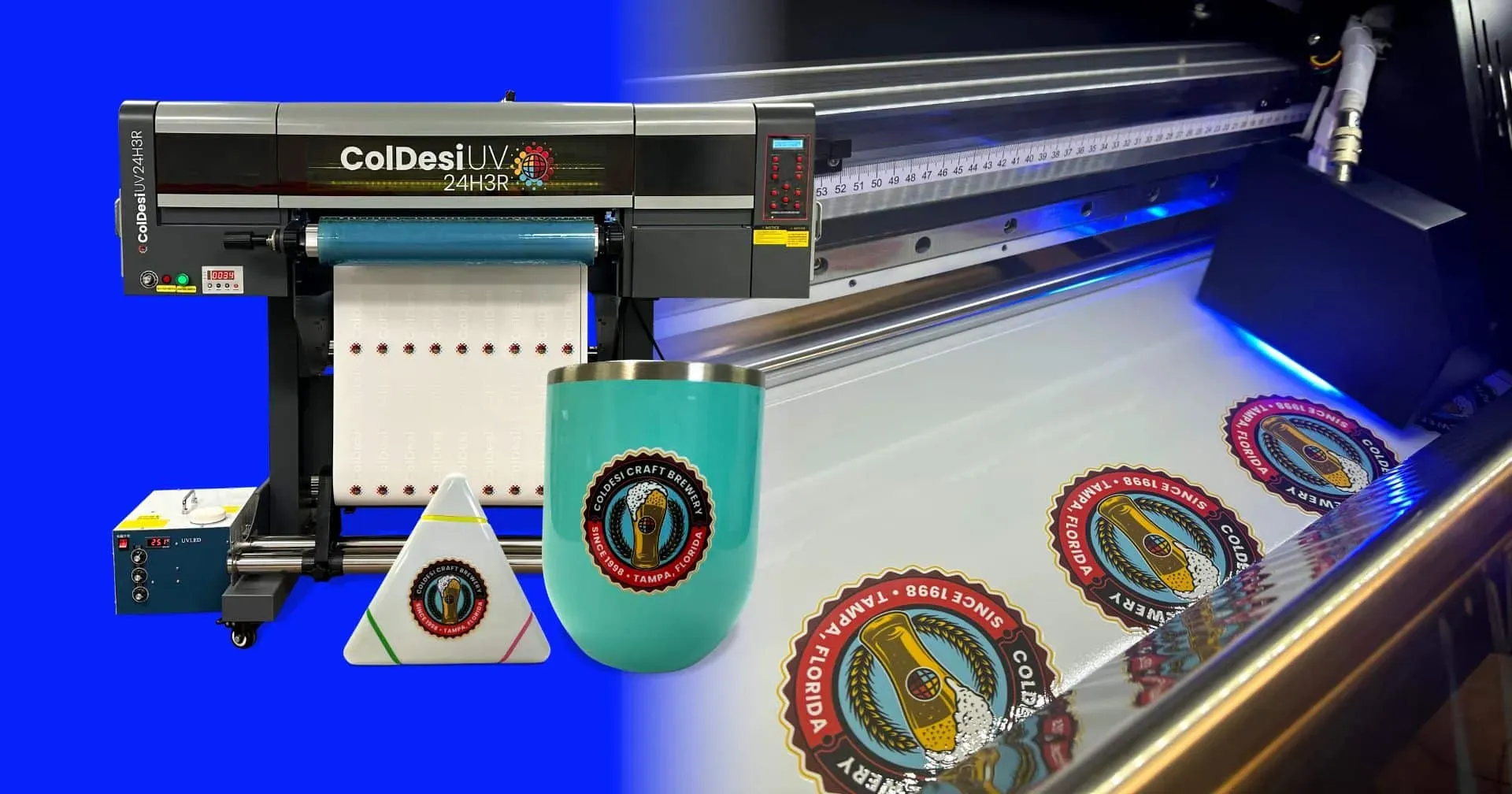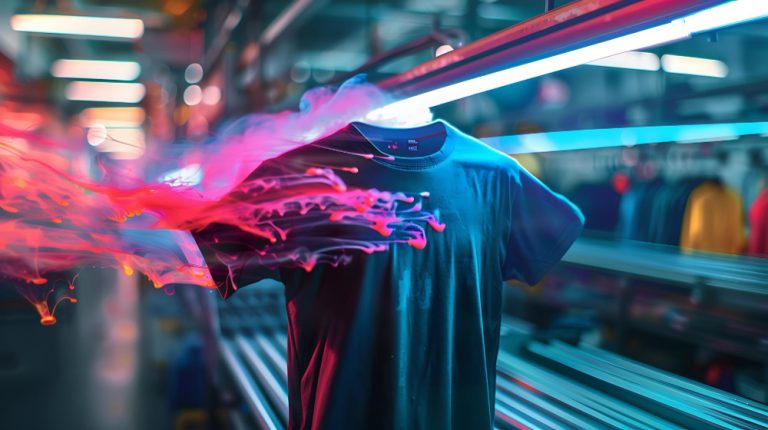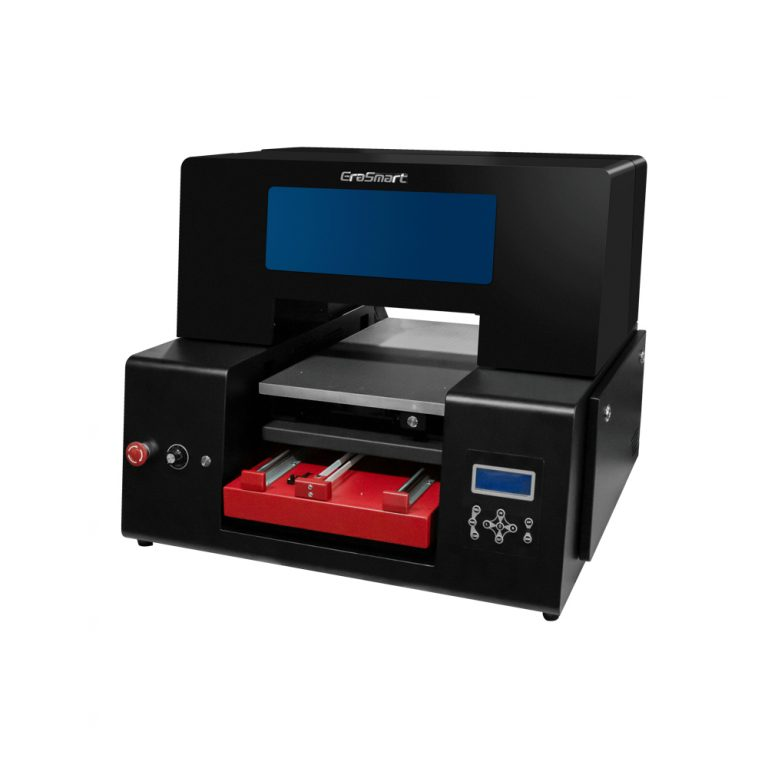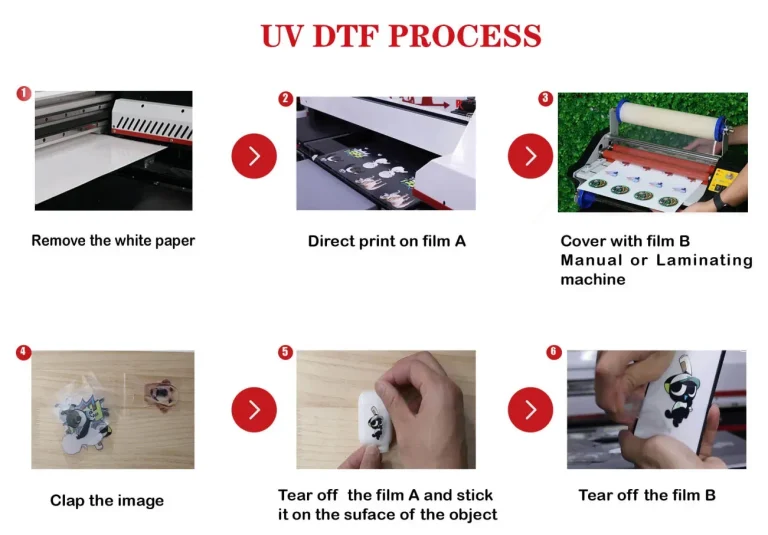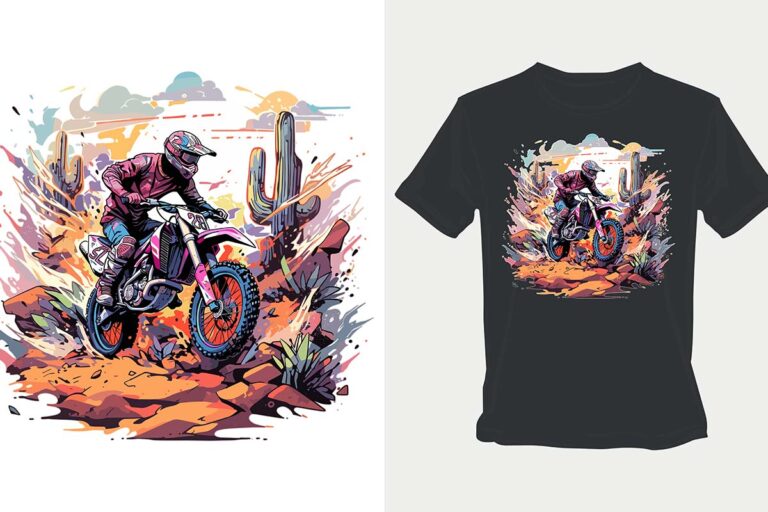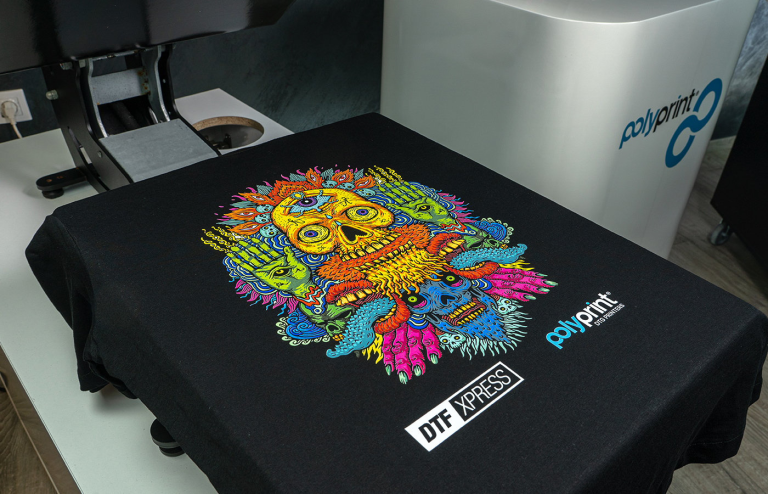UV DTF Equipment Investment: Key Considerations Explained
Investing in UV DTF equipment is a game-changer for businesses looking to thrive in the customization market. This cutting-edge technology, which integrates UV Direct to Film (DTF) processes, enables companies to produce vibrant, high-quality prints on a variety of substrates, making it an ideal choice for customized products and promotional items. As the UV printing market continues to experience significant growth, savvy entrepreneurs recognize the potential return on printing equipment investment. By capitalizing on advances in UV DTF technology, businesses can differentiate themselves in a competitive landscape. In this blog post, we will delve into the essential factors to consider when investing in UV DTF equipment to ensure a successful and profitable venture.
The investment in Direct-to-Film (DTF) equipment powered by UV technology represents a strategic move for enterprises aiming to enhance their product offerings. This innovative printing solution merges aspects of direct-to-garment and UV printing techniques, allowing for exceptional print quality across diverse materials. With the rising demand for personalized goods, exploring options in the UV DTF sector can lead to substantial market opportunities. As the landscape of the printing industry evolves, understanding the dynamics of this specialized equipment becomes critical for businesses eager to expand their capabilities and meet customer demands. Join us as we explore the factors influencing this burgeoning market and how to navigate your initial investment in this promising technology.
The Advantages of UV DTF Technology
Investing in UV Direct to Film (DTF) technology offers a plethora of advantages for businesses looking to enhance their printing capabilities. One of the most significant benefits is the durability of the prints produced. Unlike traditional printing methods, UV DTF prints are not only vibrant but also highly resistant to fading, scratching, and water damage. This ensures that the final products maintain their aesthetic appeal over time, thus increasing customer satisfaction and loyalty.
In addition to durability, UV DTF technology boasts exceptional versatility. It allows users to print on an extensive range of substrates, including textiles, plastics, and even metal. This opens doors for businesses to diversify their product offerings, catering to various markets such as apparel, home decor, and promotional items. With the ability to create customized products that meet unique consumer demands, companies can significantly boost their revenue streams.
Growing Market for UV DTF Equipment
The UV printing market is witnessing substantial growth, fueled by the increasing consumer preference for personalized and customized products. Market research indicates that sectors such as textiles, packaging, and promotional materials are expanding rapidly, providing a fertile ground for businesses that invest in UV DTF equipment. Entrepreneurs entering this field can capitalize on the rising demand by offering innovative solutions that resonate with consumers’ needs.
Furthermore, as more businesses adopt UV DTF technology, competitive advantages are becoming clear. Companies that leverage this equipment can produce high-quality items faster than traditional methods, streamlining their production processes. This efficiency not only reduces operational costs but also allows for quicker turnaround times on orders, which is a crucial factor in retaining customer loyalty in today’s fast-paced market.
Essential Factors for Equipment Investment
When considering an investment in UV DTF equipment, several essential factors must be evaluated to ensure a successful venture. One of the foremost considerations is the initial cost of the machinery. With a price range from a few thousand to tens of thousands of dollars based on features and capabilities, businesses must conduct thorough research to identify the model that aligns with their budget and production needs.
In addition to initial costs, ongoing expenses should not be overlooked. Factors such as ink, film supplies, and routine maintenance can significantly impact the overall operational budget. By forecasting these costs, businesses can prepare financially to sustain productivity while also ensuring that they maintain high-quality output, which is critical for competing in the UV printing market.
The Importance of Training and Expertise
Investing in cutting-edge UV DTF technology is only part of the equation; ensuring that your workforce is adequately trained is equally vital for maximizing the potential of this equipment. Skilled operators are essential for navigating the complexities of UV printing, as their expertise directly affects print quality and production efficiency. Companies should prioritize training programs that familiarize operators with the machinery and the intricacies of the printing process.
Well-trained personnel not only enhance the quality of output but also reduce costly errors and downtime, leading to a higher return on investment. By fostering a knowledgeable workforce, businesses can optimize their production lines, cater to increasing demand, and ultimately succeed in a competitive marketplace where precision and speed are paramount.
Selecting Reliable Suppliers for UV DTF Equipment
The supplier you choose for your UV DTF equipment plays a pivotal role in your printing business’s success. It’s crucial to partner with manufacturers known for their quality products and reliable customer support. Established companies like Mimaki, Epson, and Roland have earned their reputation through years of excellence in the printing industry, and they can significantly contribute to the seamless integration of new technology into your operations.
A dependable supplier can provide not just equipment but also essential services like installation and regular maintenance. Having access to experienced technicians ensures that any operational issues are addressed promptly, minimizing downtime and safeguarding your investment. Therefore, conducting thorough research and due diligence before selecting a supplier can pave the way for operational success in the UV DTF printing landscape.
Staying Compliant with Printing Regulations
Compliance with regulations is an often overlooked yet critical aspect of investing in UV DTF technology. Before diving into the printing business, it is essential to understand and adhere to local regulations regarding printing materials, waste disposal, and environmental practices. By ensuring compliance, businesses can operate smoothly while building a positive reputation in the marketplace.
Adhering to environmental standards not only aids in avoiding legal penalties but also enhances brand goodwill among environmentally conscious consumers. Companies that prioritize sustainability stand to attract a loyal customer base, as more consumers increasingly prefer to support businesses that demonstrate responsibility towards environmental impacts. In doing so, businesses position themselves favorably in a market that values ethical practices.
Frequently Asked Questions
What are the primary benefits of investing in UV DTF equipment?
Investing in UV DTF equipment offers numerous benefits including durability, versatility, and high-quality prints. The technology allows businesses to print vibrant designs on a variety of substrates, making it suitable for customized products, which enhances market competitiveness.
How does UV DTF technology differ from traditional printing methods?
UV DTF technology differs from traditional printing methods by using UV light to cure inks as they are applied to film, resulting in durable and vibrant prints. This method allows for direct to film printing on various surfaces, unlike conventional processes that may only work on specific materials.
What factors should I consider regarding costs when investing in UV DTF equipment?
When investing in UV DTF equipment, consider initial costs such as the price of the printers, which can vary significantly based on features. Additionally, ongoing expenses like inks, films, and maintenance are critical for budgeting your overall printing equipment investment.
What are the current trends driving growth in the UV printing market?
The UV printing market is experiencing growth due to increasing consumer demand for personalized and customized products. This trend is particularly evident in textiles and promotional materials, leading to more businesses investing in UV DTF technology to meet market needs.
How important is training for operators when utilizing UV DTF equipment?
Training is essential when utilizing UV DTF equipment. Skilled operators enhance both print quality and production efficiency, significantly impacting your return on investment. Investing in comprehensive training programs ensures your team can fully leverage the capabilities of the equipment.
What role does supplier reliability play in UV DTF equipment investment?
Supplier reliability is crucial in UV DTF equipment investment. Choosing reputable manufacturers ensures access to quality products, installation support, and ongoing maintenance. A reliable supplier can significantly affect operational efficiency and help businesses scale effectively.
| Key Points | Details |
|---|---|
| Introduction to UV DTF Equipment Investment | Investing in UV DTF technology merges direct-to-garment and UV printing, offering vibrant prints on various substrates. |
| Understanding UV DTF Technology | Utilizes UV light for high-quality, durable prints on textiles and non-porous materials. |
| Current Market Growth | Growth in personalized products drives demand for UV DTF equipment, especially in textiles and packaging. |
| Initial and Ongoing Investment Considerations | Initial costs range from thousands to tens of thousands; ongoing expenses for inks and maintenance should also be budgeted. |
| Training and Expertise Needs | Invest in workforce training to maximize equipment capabilities and maintain production efficiency. |
| Supplier Reliability | Choose reputable suppliers like Mimaki, Epson, or Roland for quality equipment and support. |
| Compliance with Regulations | Understand local regulations regarding materials and waste for smooth operations. |
| Anticipating Future Trends | Stay informed about innovations to make savvy investment choices that align with market developments. |
| Specific Recommendations for Starting Out | Develop a clear business plan and network at trade shows for insights. |
Summary
UV DTF equipment investment represents a transformative opportunity for businesses looking to thrive in the customization market. As more consumers seek personalized products, understanding the essential facets of this investment becomes crucial. From assessing the costs associated with the equipment, including both initial and ongoing expenses, to recognizing the need for adequate training and compliance with industry regulations, a strategic approach is necessary. By choosing reliable suppliers and staying informed about future trends, businesses can leverage UV DTF technology to not only meet current market demands but also anticipate the future landscape of printing innovations. Ultimately, a well-researched and planned investment in UV DTF equipment can distinguish your brand in a competitive marketplace.

